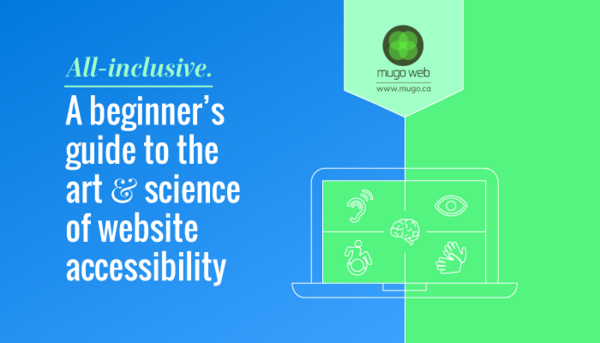
Deciding to develop your website to conform to the Web Content Accessibility Guidelines (WCAG, pronounced “wickag”) is a positive move that will allow more visitors to consume your content and will help meet impending legal requirements. But how do you get started? What steps do you need to take to make your site more accessible and ensure it stays accessible?
We here at Mugo have helped many teams navigate the website accessibility process. The following outline can help you navigate the process.

Want to pick up some pro strategies on how to make your website accessible to people with disabilities?
On Tuesday, July 11, our in-house accessibility expert will share his knowledge and technical tips on web accessibility.

We’ve been writing a lot about accessible websites lately because it’s a topic we’re passionate about at Mugo Web. We believe that whether or not web accessibility is governed by law in your region, making your site accessible to people with disabilities is good business practice. And there are literally millions of reasons to do so.

The reasons for bringing your website in line with the Web Content Accessibility Guidelines (WCAG) 2.0 are well documented. Whatever your rationale for embarking on this worthy task, you will need to assess your current online presence for compliance.
Auditing and developing accessible websites will require you to become familiar with what is referred to as a “screen reader”.

Making your website accessible to people with disabilities - whether you’re launching a brand new site, or remediating an existing one - may seem complex when you consider all the components that require attention (in-page navigation, links, colour contrast, forms, and alt tags, among other things). But the right CMS can make the job a lot easier.
A key component of an accessible website, accessible in-page navigation provides a way for website visitors to jump straight into the main content on your site and access different sections of the page quickly, without having to tab through every link to get there.

Ensuring your website is accessible to all members of your target audience can add unique requirements that demand novel solutions from your development team.

Links are the pathways that bind the web and give it structure. For people with web accessibility challenges, perceiving and understanding the links on your website is of utmost importance.
Before you embark on a project to make your website accessible to people with disabilities, it’s critical to understand what such a large and varied audience really looks like -- and what they need from your site.
Insufficient contrasting text elements on your website will limit your audience by preventing users who have difficulty distinguishing colours from comfortably consuming your content.

Forms are an integral part of many websites but they pose unique challenges for accessible websites.